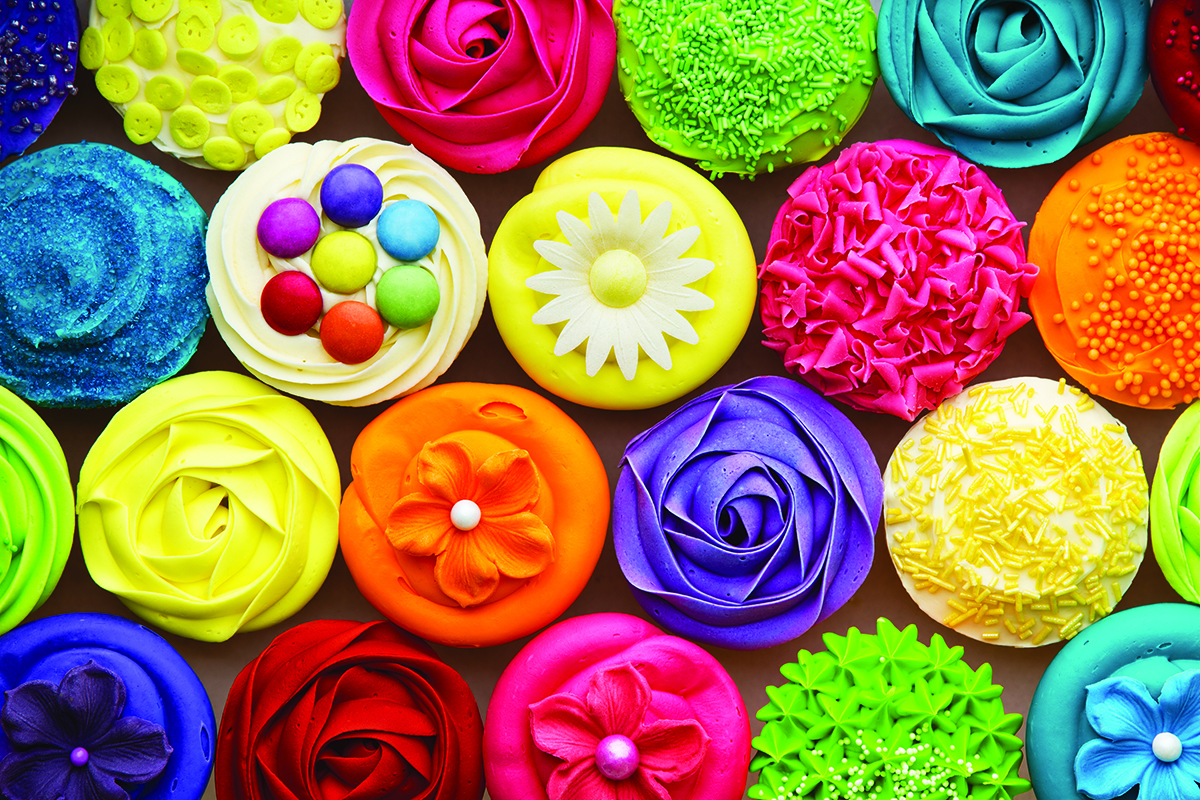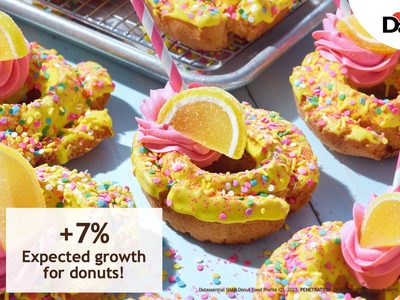Colors derived from plant-based and other natural sources are key to supporting the ongoing call from today’s consumers for clean labels, according to Kelly Newsome, senior global marketing manager, Colors & Savory Flavors, ADM
Naturally derived colors provide alternatives to artificial colors that are under scrutiny, such as titanium dioxide (TiO2) and FD&C Red #3, which are used in baked goods, icings, confections, snacks and more, Newsome adds. Finding alternative solutions to these colorants is more important than ever, with both regulatory bodies and consumers paying attention to this space.
According to research, 75% of consumers in North America say it’s important that food and drink products do not contain artificial colors¹. This comes at a time when consumers want to feel confident that the food products they’re purchasing reflect their values, with “natural claims” ranking in the top three categories they prioritize when looking for food products to eat¹. While there is not one definition of what constitutes “clean label,” many shoppers state that products with short, recognizable ingredient lists influence their purchasing decisions².
Concurrently, 63% of North American consumers are unwilling to compromise on taste, appearance, sustainability and cost to ensure products do not contain artificial colors. Bakery brands need to address these aspects in order to deliver visually appealing, delicious offerings that also meet clean label expectations.
Specifically, when working with naturally derived colors, bakers must consider the processing conditions and formulation challenges in various baked goods including pH instability, high heat, moisture and solubility, as well as light exposure, taste, packaging and shelf life.
Stable color solutions
ADM addressed this challenge specifically, and offers valuable solutions that deliver important benefits, according to Emina Goodman, senior director, Colors, ADM.
“We support bakers with quality, stable color solutions within our Colors from Nature® library that utilizes a variety of sources like fruits, vegetables and botanicals,” Goodman explains. “The platform delivers a full spectrum of exceptionally stable color solutions for bakery and baked snack applications.
“Our approach to developing colors derived from natural sources is unique, and we’re involved in every step of the process through our vertically integrated supply chain. This includes growing, sourcing, harvesting, pigment extraction, washing and filtration. From there, we implement concentration, stabilization and deodorization steps, ensuring exact target shades and performance are met, supporting gorgeous baked goods throughout shelf life. Our in-house capabilities enable turn-key support to manufacturers, examining stability and testing solutions in various conditions, including high heat, baking, frying and the extrusion process. This is especially important for baked goods, as well as cereals, corn or potato chips and more,” Goodman adds.
Notably, ADM’s Colors from Nature® portfolio leverages proprietary and patented micronization technology. This technology creates color solutions with plating characteristics that prevent flashing, streaking, bleeding and improve solubility, which is critical for highly colored baked goods. Micronization technology is also useful when adding wet ingredients to dry cake mix, keeping the colors stable and uniform. The technology works incredibly well for seasonings, too, providing color stability and proper coating to snacks.
Further, ADM’s Colors from Nature® solutions are available in both water-soluble and oil-soluble options, with oil-soluble color solutions crucial for bakery items, as many rely on oil to support moisture. Additionally, ADM’s patented emulsion system is particularly helpful in fat- or oil-based applications.
“For example, in baked goods, our emulsion technology can stop a bright pistachio green frosting from bleeding into a vanilla cupcake base,” Goodman explains. “Certain plant-based colors may have inherent off-notes or aromas, which we can help bakers avoid through our patented extraction technology. This technology removes undesirable flavors or aromas and ensures a quality hue by also removing proteins, sugars and starches that may come from a plant-based source.”
ADM’s extensive color solutions library supports bakers in using alternative solutions to FD&C Red #3 and TiO2 that are stable and just as eye-catching. For reds, manufacturers can look to ADM’s range of fruit and vegetable juices, as well as carmine and cochineal, and other red carotenoids to create stable hues like true red, reddish-pink, deep red and red-violet for captivating baked snacks, cakes, muffins and other pastries.
“Our PearlEdge™ line of proprietary white solutions is an outstanding alternative to TiO2, creating brilliant white shades and reaching clean label targets,” Goodman explains. “Each solution within our PearlEdge™ line can assist bakers in meeting specific formulation requirements, while also elevating visual appeal, building uniformity and delivering brilliance. PearlEdge™ technology supports glossy glazes, creamy coatings, fillings and frostings, and smooth fondants for sandwich cookies, snack cakes and coated pretzels.”
Vital but largely elusive in the baked goods and snacks arena is a stable, naturally derived blue.
“We filled this gap with our blue color solution, which is derived from the Amazonian huito fruit, providing bakers with a “true blue” hue that supports color stability across different pH systems, as well as high heat in baked goods and snacks,” Goodman says.
“Our fruit juice blue* is heat-, acid- and light-stable, giving bakers and snack makers the confidence that their frostings, cupcakes, cakes and snack foods will retain a bold blue across various processing conditions. Our fruit juice blue not only delivers exceptional blue shades, such as those needed in baked goods like blueberry cupcakes, but it can also support a range of purples, browns and greens, bringing optionality to bakers developing striking baked goods, snacks and extruded offerings.”






